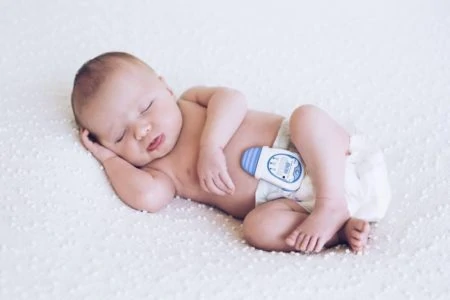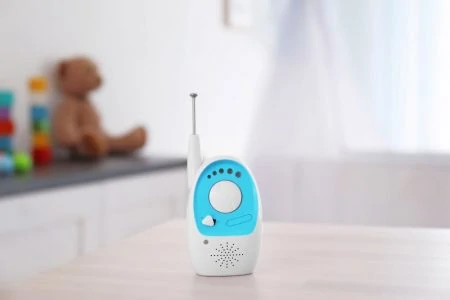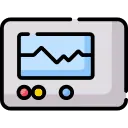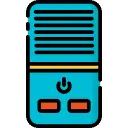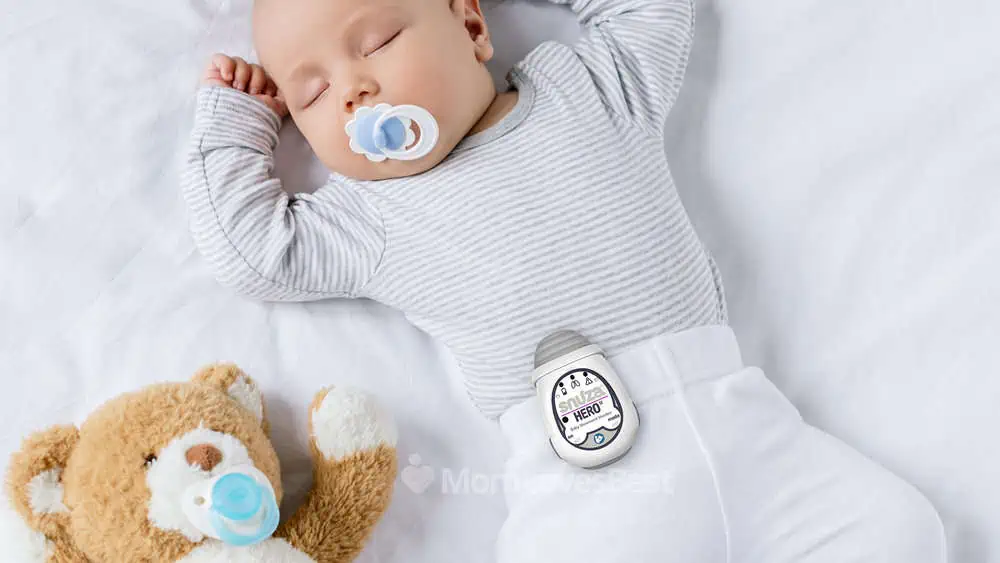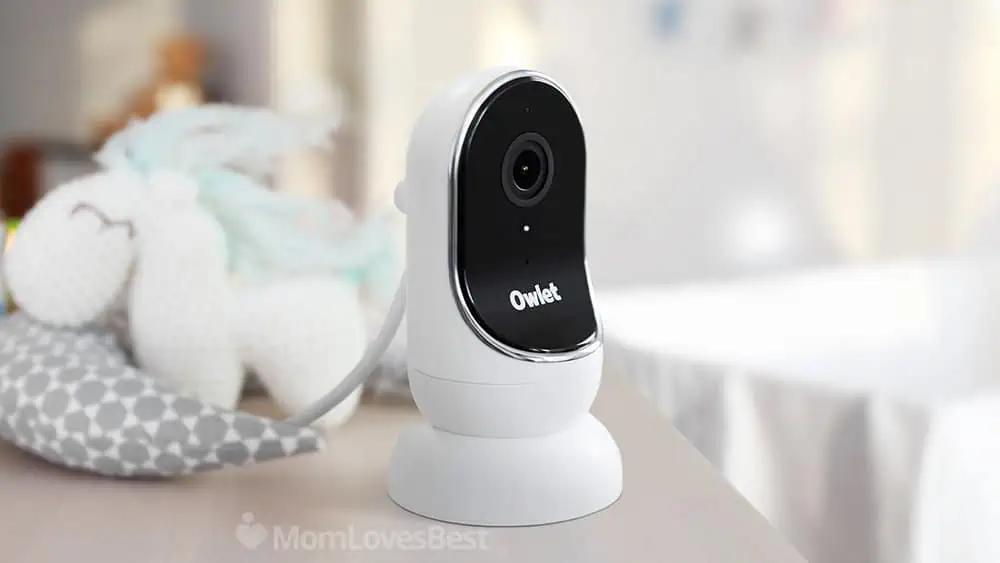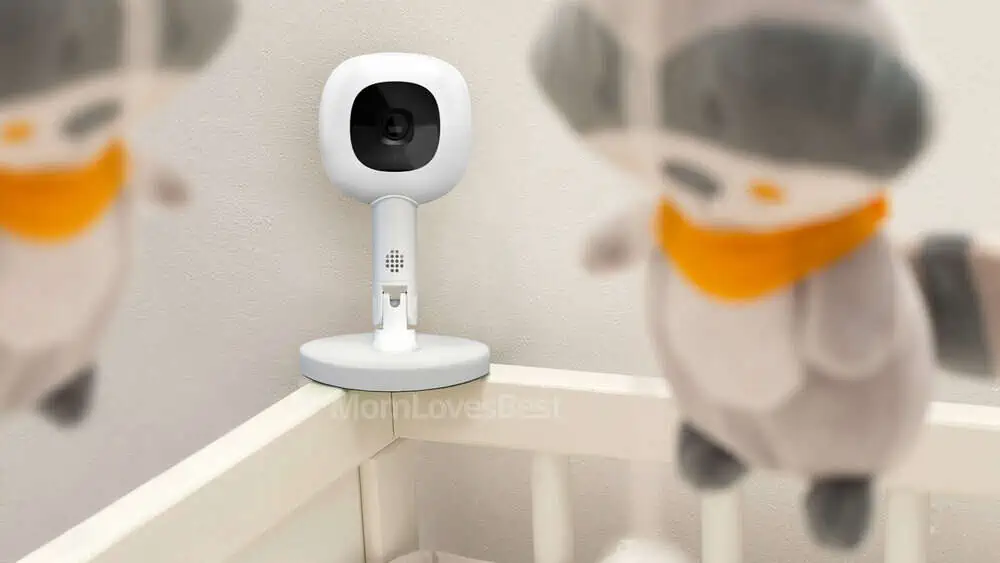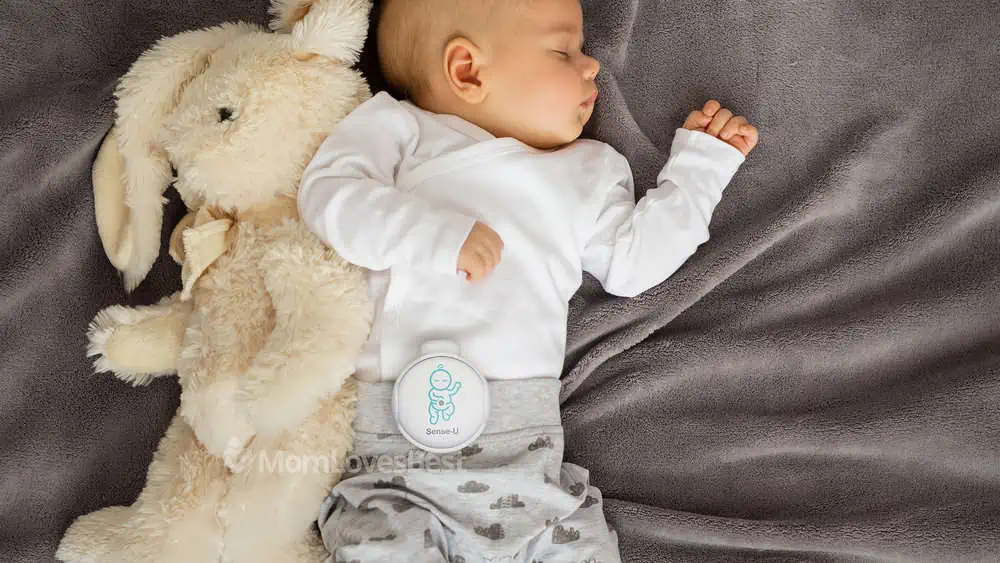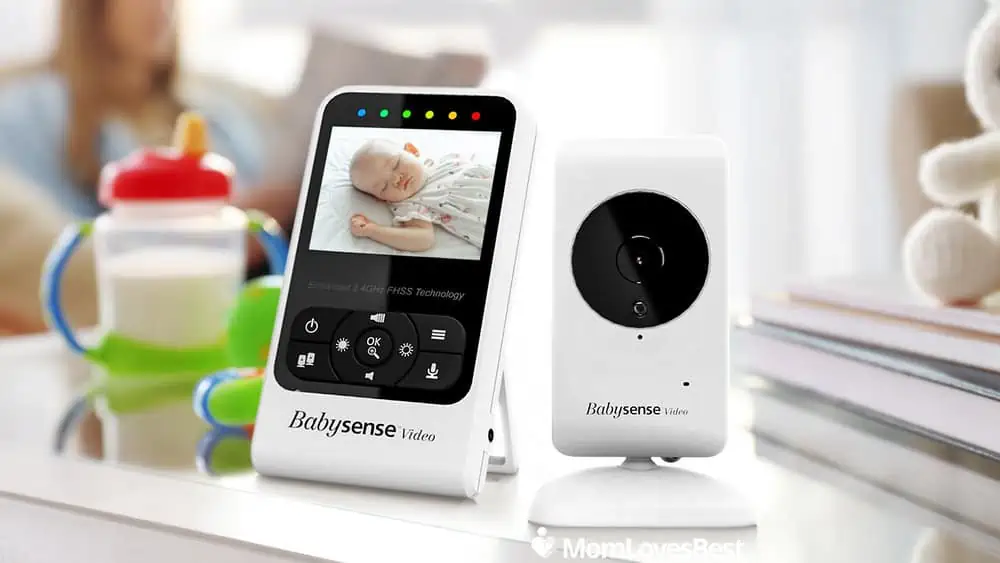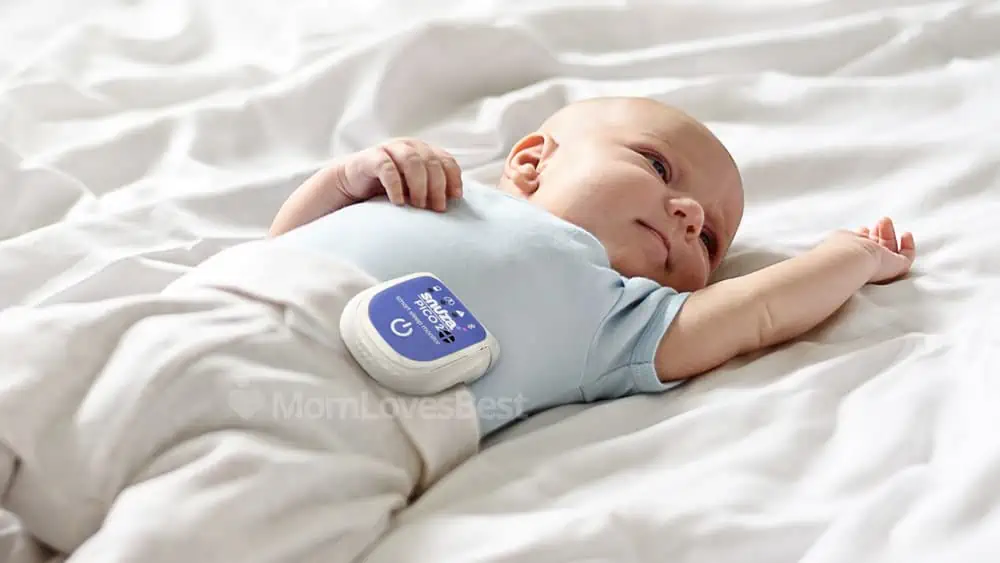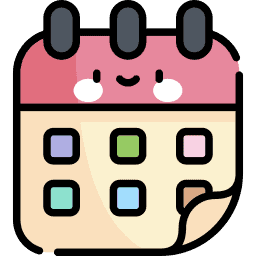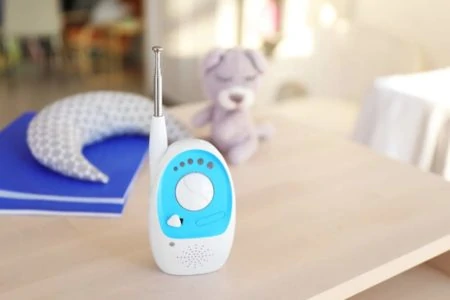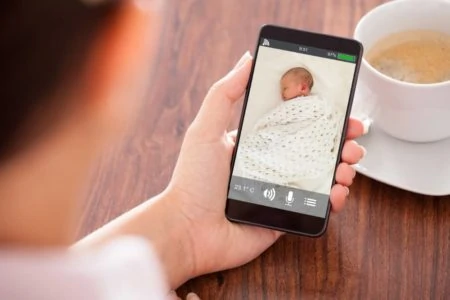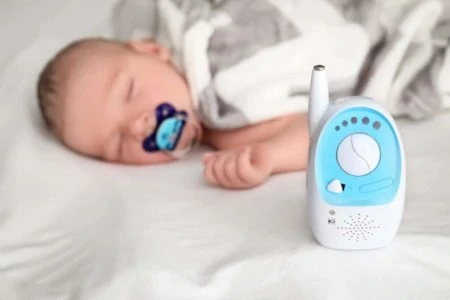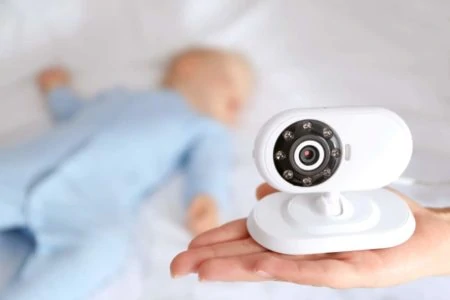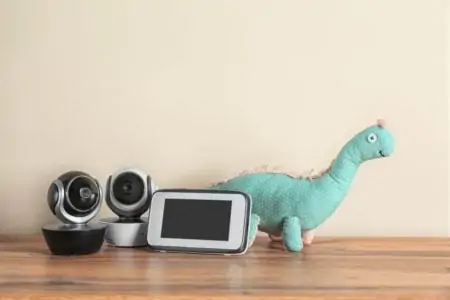New parents often feel anxious when their little one is asleep. While a monitor might seem like the perfect solution for peace of mind, not every baby requires one (2).
We analyzed the market to separate the essential tools from the expensive toys. We looked at sensor pads, wearable clips, and smart video systems to determine which devices are actually reliable.
In this guide, we will help you decide if you need a breathing monitor and review the top-rated options to keep your baby safe (and help you sleep better).
- Monitors heart rate & oxygen levels
- Can access stats from smartphone
- 4X zoom
- HD camera and night vision
- Reliable alert system
- HSA and FSA approved
- Monitors breathing, rolling, & room temperature
- Easy to connect via Bluetooth
- Free tracking app
- Helps monitor for SIDS
- Wireless
- High-accuracy reports
- No subscription fee for baby analytics
- Night vision
- Non-wearable
What Does a Baby Breathing Monitor Do?
You breathe at a steady rate, but your newborn might not. Periodic breathing is common in infants and involves pauses in their breathing patterns. While this is usually normal, especially for preemies or during deep sleep, it can be terrifying for a parent to witness (3).
A breathing monitor acts as a digital guard. It differentiates between normal pauses and dangerous situations. If your baby stops breathing or stops moving for a set time (usually 15 to 20 seconds), the device sounds an alarm.
Although periodic breathing typically resolves on its own, this alert system provides extra reassurance during those vulnerable early months.
Should I Use a Breathing Monitor?
If your baby is full-term, average weight, and generally healthy, your pediatrician likely won’t deem a monitor a medical necessity. However, many parents choose them for personal peace of mind.
There are specific medical instances where a doctor might recommend one (4):
- Premature birth: Preemies often have immature respiratory systems.
- History of breathing issues: Conditions like sleep apnea or chronic lung disease.
- Previous scare: An Apparent Life-Threatening Event (ALTE) or Brief Resolved Unexplained Event (BRUE).
Doctors may also suggest monitoring for rare conditions like respiratory distress syndrome or cardiac issues (5). Always consult your pediatrician before purchasing a monitor for medical reasons to ensure it meets your baby’s specific needs.
How to Choose a Baby Breathing Monitor
Selecting the right monitor depends on your lifestyle and your baby’s sleep setup. Here are the three main factors to consider before buying.
Product Reviews
We evaluated the market for accuracy, ease of use, and reliability to bring you these top seven recommendations.
Snuza Hero SE Baby Movement Monitor
Best All-Round Baby Breathing Monitor
The Snuza Hero SE is a parent favorite because of its simplicity and portability. It clips directly onto your baby’s diaper, meaning you can use it in a bassinet, crib, or travel playard without setting up wires.
Its standout feature is the vibration stimulus. If the device detects no abdominal movement for 15 seconds, it vibrates gently to rouse the baby. Often, this is enough to get the baby breathing again. If motion doesn’t resume within five more seconds, a loud alarm sounds to alert you.
Because it attaches to the baby, it works well even if you aren’t using a specific sleep sack. It is made of medical-grade plastic to prevent irritation for babies with sensitive skin.
Pros
- Vibrates to rouse baby before alarming.
- Completely portable and wireless.
- No wires near the baby.
- Replaceable battery included.
Cons
- Audible alarm can be muffled by thick sleep sacks.
- Must be reclipped with every diaper change.
Our Ratings
Owlet Camera Video Baby Monitor
Best in Design Baby Breathing Monitor
The Owlet Cam is a sleek, high-definition video monitor designed to integrate seamlessly with the Owlet Dream Sock (sold separately or as a bundle). While the camera provides a crystal-clear 1080p view of your baby, combining it with the sock unlocks full health tracking, including heart rate and oxygen levels.
The camera features a 130-degree wide-angle lens, room temperature sensor, and two-way audio. It uses encrypted Wi-Fi to send real-time video and audio to your smartphone app, allowing you to check in on your little one from anywhere.
It is an excellent choice if you want a modern, data-rich system. The app tracks sleep trends, helping you understand how long your baby slept and how often they woke up.
Pros
- Integrates with Owlet Dream Sock for vitals.
- High-definition night vision.
- Background audio allows you to use other apps while listening.
- Room temperature sensor.
Cons
- Breathing monitoring requires the separate purchase of the Sock.
- Relies on Wi-Fi connection.
Our Ratings
Nanit Pro Complete Infant Sleeping and Breathing Monitoring System
Best Night Vision/Video Baby Breathing Monitor
The Nanit Pro is a top-tier smart monitor that tracks breathing without electronics touching your baby. It uses a custom-patterned “Breathing Band” (fabric wrapped around the baby) which the overhead camera reads to detect breathing motion.
This system is fantastic for data lovers. It tracks sleep patterns, wake windows, and even your baby’s growth progress via the Smart Sheet. The camera delivers superior HD video quality and provides a “bird’s-eye view” of the crib, ensuring no blind spots.
Installation usually requires wall mounting over the crib to get the correct angle for the breathing analytics, though floor stands are available if you cannot drill holes. The app gives you a morning summary of your baby’s night, much like a sleep tracker for adults.
Pros
- No sensors or electronics touch the baby’s skin.
- Excellent HD video quality.
- Detailed sleep analytics and growth tracking.
- Background audio works even when phone is locked.
Cons
- Requires subscription for advanced video history features.
- Dependant on internet connection.
Our Ratings
Sense-U Breathing & Rollover Monitor
Best Clip-On Baby Breathing Monitor
The Sense-U monitor offers a unique safety feature: it alerts you if your baby rolls onto their stomach. Since back sleeping is recommended to prevent SIDS, this rollover alert is a huge selling point for anxious parents.
This small, coin-sized device clips onto the diaper or sleepwear. It tracks abdominal movement (breathing), body temperature, and sleep position. It connects via Bluetooth to your smartphone, alerting you directly if breathing stops or if the baby gets too hot.
Because it uses Bluetooth, the range is limited (about 50 feet). For whole-house coverage, you may need the optional base station, but for apartment living or room-sharing, the standalone clip works well.
Pros
- Alerts for stomach sleeping (rollover).
- Tracks body temperature to prevent overheating.
- Small and unobtrusive.
- Free app for Android and iOS.
Cons
- Bluetooth range is limited without the base station.
- Clip can slide off if not attached securely.
Our Ratings
Babysense Video and Movement Monitor
Best for Preemies Baby Breathing Monitor
The Babysense monitor is a “set it and forget it” system that doesn’t involve wearables. It places two highly sensitive sensor pads under the mattress to detect micro-movements through the bedding.
If motion stops for 20 seconds, or if the system detects fewer than 10 micro-movements per minute, the alarm sounds on the parent unit. This contactless approach is excellent for preemies or babies who are easily irritated by diaper clips.
Crucially, this system does not rely on Wi-Fi. It uses a secure, closed-loop radio frequency, making it hack-proof and reliable even if your internet goes down.
Pros
- Non-contact; nothing touches the baby.
- Does not require Wi-Fi or smartphones.
- Includes two pads for full crib coverage.
- Very low false alarm rate when set up correctly.
Cons
- Cannot be used for co-sleeping or in motion (swings/cars).
- Requires a hard, flat surface under the mattress to work best.
Our Ratings
Snuza Pico 2 Baby Monitor
Best On-the-Go Baby Breathing Monitor
The Snuza Pico 2 takes the concept of the Snuza Hero and upgrades it with smart connectivity. While the Hero is a standalone alarm, the Pico 2 connects to your phone to provide data on skin temperature, body position, and sleep states.
It retains the vibration feature: if breathing stops for 15 seconds, it vibrates to rouse the baby. If that fails, it alarms at 20 seconds. The clip is smaller and lighter than the Hero, making it even less intrusive.
It is rechargeable, which saves money on batteries, but you will need to remember to charge it regularly. It is an excellent middle ground for parents who want portability but still crave data on their phones.
Pros
- Vibration stimulus feature.
- Tracks body position and temperature.
- Rechargeable battery.
- Connects to app for settings and history.
Cons
- More expensive than the basic Hero model.
- Requires careful attachment to avoid false alarms.
Our Ratings
iBaby Breathing Monitor
Best Affordable Baby Breathing Monitor
The iBaby monitor uses Artificial Intelligence (AI) to track breathing without any wearables or sensor pads. The camera analyzes pixel changes to detect the rise and fall of your baby’s chest. This means no laundry (like socks/bands) and no batteries to charge.
It tracks face detection, sleeping patterns, room temperature, and humidity. It also features a moonlight projector and built-in lullabies to help soothe your baby to sleep.
The system offers free cloud storage for alerts, allowing you to review video clips of what happened before an alarm triggered. This is a great budget-friendly option for tech-savvy parents.
Pros
- No wearables or ongoing costs.
- Includes starry night projector and music.
- Free cloud storage for alerts.
- 360-degree view with pan and tilt.
Cons
- Setup can be finicky.
- App interface can be complex for some users.
Our Ratings
When to Seek Help for Irregular Breathing
If you suspect your baby is struggling to breathe, do not wait for a monitor to alert you. Trust your instincts. Health issues in newborns can escalate quickly.
Watch for these immediate warning signs:
- Color change: Blue or gray tinge around the lips, mouth, or fingernails.
- Retractions: The chest sinks in at the ribs or neck with every breath.
- Rate changes: Consistently rapid breathing (more than 60 breaths/minute) or very long pauses.
- Noises: Grunting at the end of every breath or high-pitched wheezing.
- Lethargy: The baby is limp, unresponsive, or difficult to wake.
If you see these signs, seek emergency medical care immediately. A monitor is a tool for observation, not a substitute for medical intervention (6).
